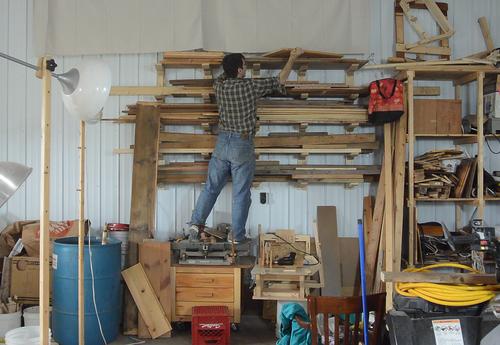
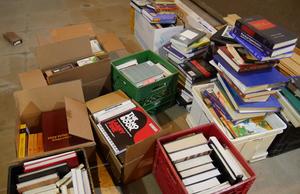 After moving we no longer had a spot for these
bookcases behind the couch. We hardly ever look at the books, so I made a
tall bookcase to go in the basement.
After moving we no longer had a spot for these
bookcases behind the couch. We hardly ever look at the books, so I made a
tall bookcase to go in the basement.

 After moving we no longer had a spot for these
bookcases behind the couch. We hardly ever look at the books, so I made a
tall bookcase to go in the basement.
After moving we no longer had a spot for these
bookcases behind the couch. We hardly ever look at the books, so I made a
tall bookcase to go in the basement.
I figured I should use some of the old lumber that I stashed on this lumber rack.
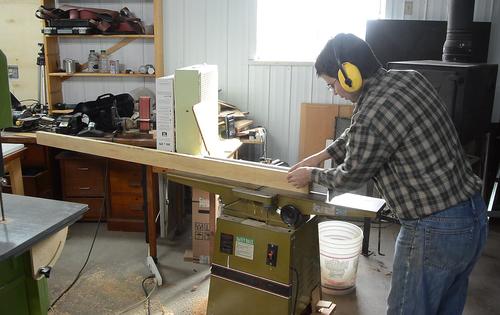
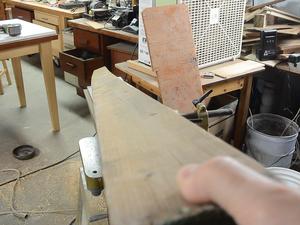 This is not great wood. The first 2x4 I grabbed was quite bent!
This is not great wood. The first 2x4 I grabbed was quite bent!
But the other pieces I picked were straight enough to be of use without wasting too much material.
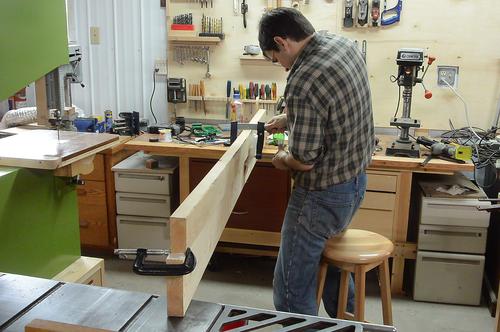 Though one of the 2x4s had a bow to it along the flat side, but I was able
to force it straight by putting clamps across the joint as I glued it to
the side of a 2x8. This piece will comprise one of the uprights
for the shelf.
Though one of the 2x4s had a bow to it along the flat side, but I was able
to force it straight by putting clamps across the joint as I glued it to
the side of a 2x8. This piece will comprise one of the uprights
for the shelf.
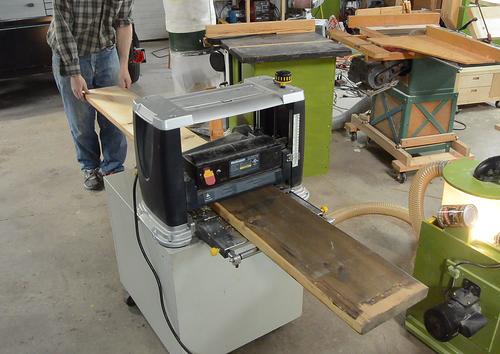 Another board that was stained will be the other upright. Here I'm planing
the stain off of it. Stain and varnish are safe to plane off,
but most paint will destroy the planer knives.
Another board that was stained will be the other upright. Here I'm planing
the stain off of it. Stain and varnish are safe to plane off,
but most paint will destroy the planer knives.
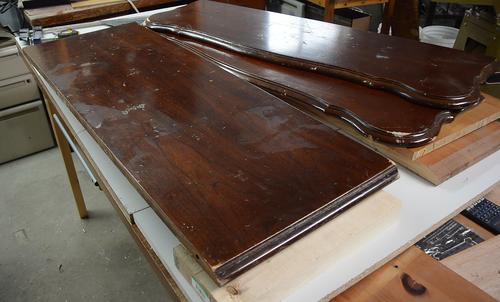 For the shelves I picked out pieces of an old table top.
For the shelves I picked out pieces of an old table top.
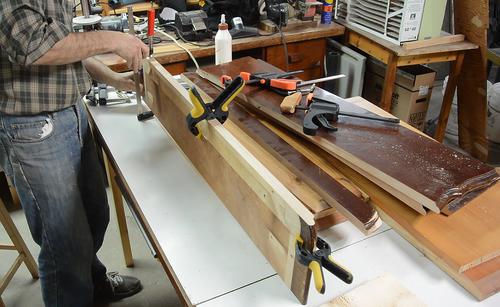 ...and the three offcuts glued together made for a fourth shelf. I first glued
just two of these together to make the glue-up easier, then glued on the
third piece on.
...and the three offcuts glued together made for a fourth shelf. I first glued
just two of these together to make the glue-up easier, then glued on the
third piece on.
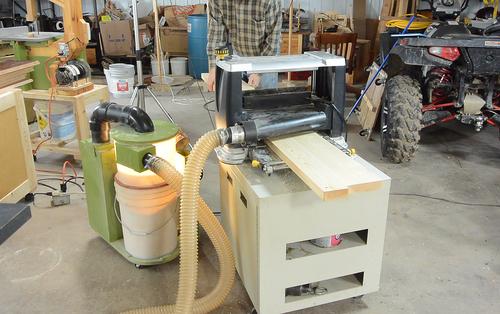 I had to plane the piece that I glued together from a 2x4 and a 2x8 down to
the thickness of the other upright. This filled a 20 liter bucket
with shavings.
I had to plane the piece that I glued together from a 2x4 and a 2x8 down to
the thickness of the other upright. This filled a 20 liter bucket
with shavings.
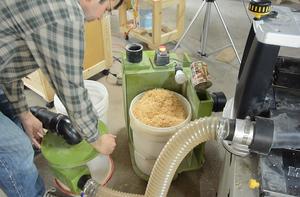 Fortunately, I can watch it fill up, and the buckets are easy
to change. Even though this dust collector has smaller capacity than
my other dust collectors, I like having the shavings in buckets, because
I can
dump these directly
into the wood stove for burning.
Fortunately, I can watch it fill up, and the buckets are easy
to change. Even though this dust collector has smaller capacity than
my other dust collectors, I like having the shavings in buckets, because
I can
dump these directly
into the wood stove for burning.
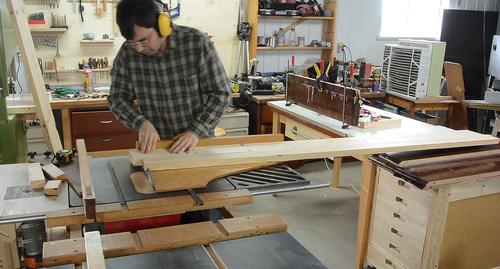
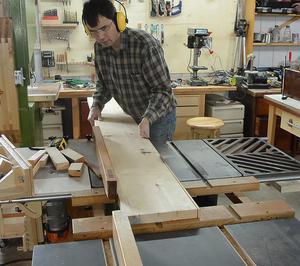 Cutting the sides to length using a table saw sled, then to width.
Cutting the sides to length using a table saw sled, then to width.
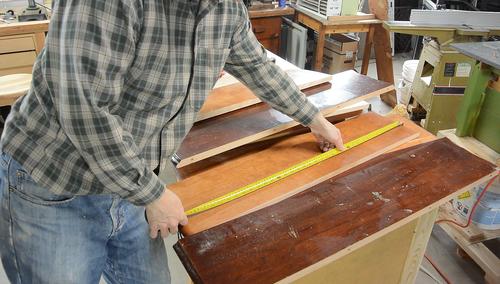 I also cut up another table top for three more shelves, so I had
seven shelves in total. Here checking which one is shortest to determine
how wide I can make the bookcase.
I also cut up another table top for three more shelves, so I had
seven shelves in total. Here checking which one is shortest to determine
how wide I can make the bookcase.
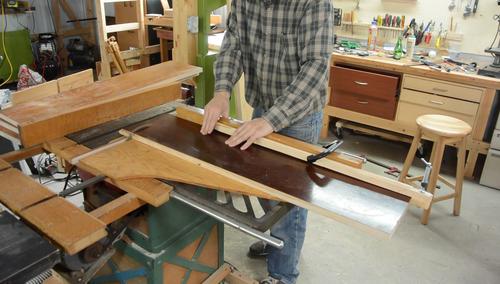 I rigged up a temporary extension to my table saw sled to use as a
stop to cut them all to the same length.
I rigged up a temporary extension to my table saw sled to use as a
stop to cut them all to the same length.
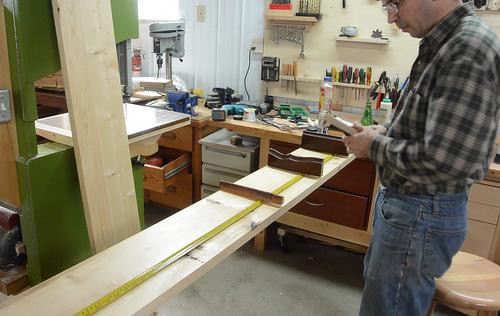 Then using the offcuts to figure out where to place the shelves.
Then using the offcuts to figure out where to place the shelves.
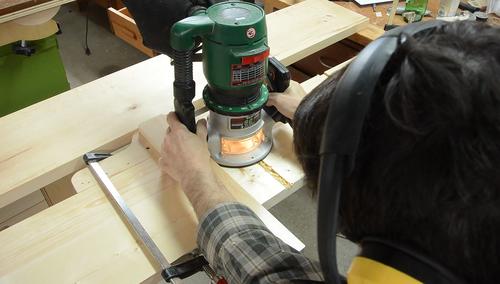
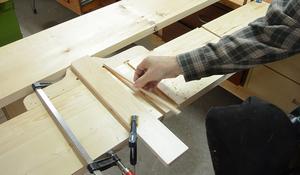 I used a router to cut the dadoes for the shelves using a 1/2" router bit.
I used a router to cut the dadoes for the shelves using a 1/2" router bit.
I made a spacer to offset a second cut from the first cut by the right amount to make a dado that fit the shelves snugly. Actually, I had to make two spacers, because the second table top was not the same thickness and I didn't want to plane the thicker pieces down any.
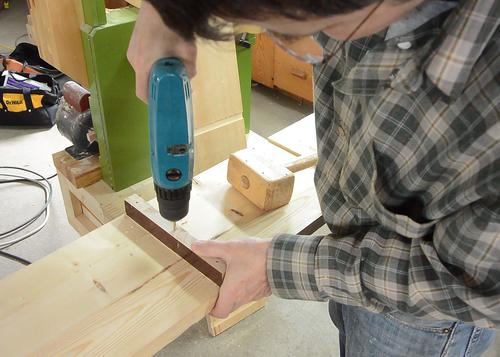 I carefully drilled three holes in one of the offcuts to make a temporary drill
guide to drill the holes for screws in the sides of the shelves.
I carefully drilled three holes in one of the offcuts to make a temporary drill
guide to drill the holes for screws in the sides of the shelves.
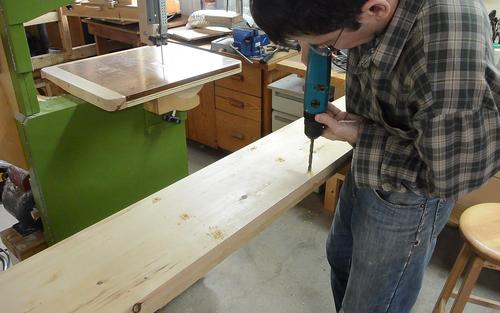 I didn't have a countersink bit handy, so I used the tip of a larger drill to
drill a slight cone shape into the sides for the screw heads.
I didn't have a countersink bit handy, so I used the tip of a larger drill to
drill a slight cone shape into the sides for the screw heads.
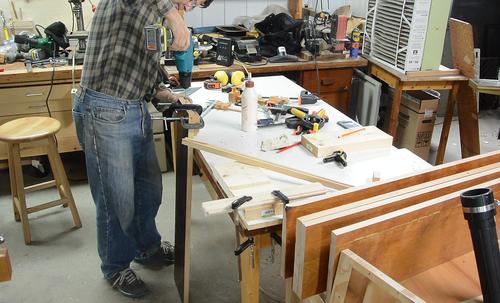
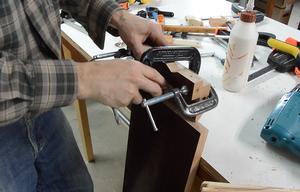 I clamped another offcut to the side of this temporary drill guide, and then used
that to clamp it against the ends of the boards to drill the screw holes in those.
I clamped another offcut to the side of this temporary drill guide, and then used
that to clamp it against the ends of the boards to drill the screw holes in those.
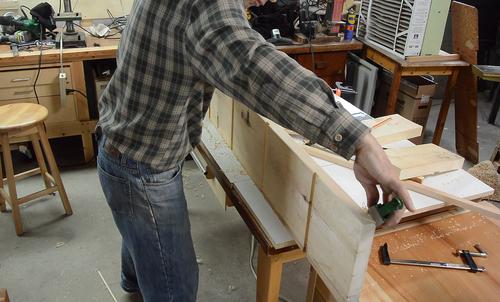
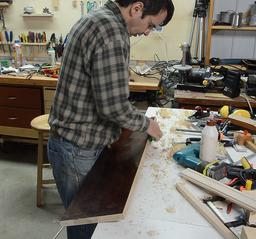 After that, I put a roundover on all the edges by making passes with a small palm
plane at different angles (like this).
After that, I put a roundover on all the edges by making passes with a small palm
plane at different angles (like this).
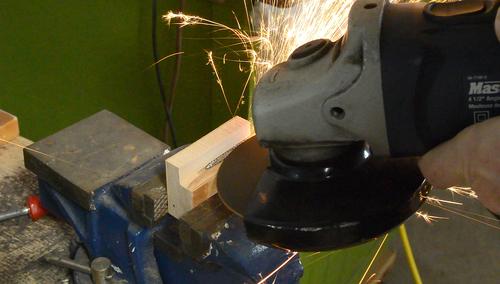
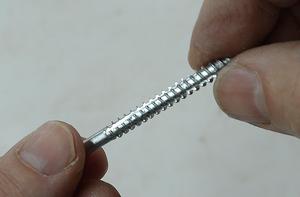 I used this block to hold the screw while grinding a groove along the threads,
then turned the screw 90 degrees, cut another groove, and did this twice more
to make four grooves along it.
I used this block to hold the screw while grinding a groove along the threads,
then turned the screw 90 degrees, cut another groove, and did this twice more
to make four grooves along it.
I also ground the head down to a triangle so I could grab it with the drill chuck.
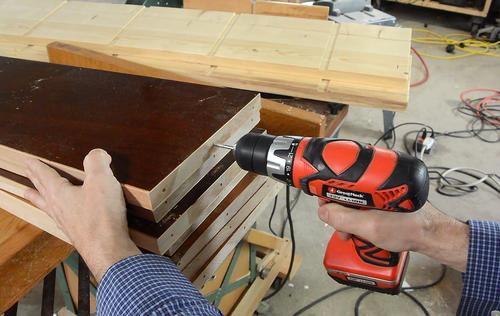 With my homemade thread tap directly in the drill's chuck,
I screwed it into each hole in the ends of the boards, backed it out,
then did the next hole, and so on, cutting a thread into every one.
With my homemade thread tap directly in the drill's chuck,
I screwed it into each hole in the ends of the boards, backed it out,
then did the next hole, and so on, cutting a thread into every one.
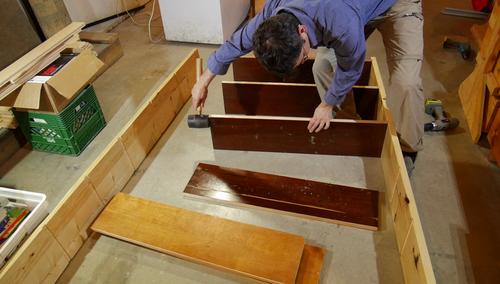
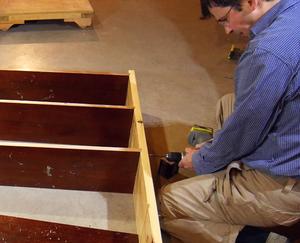 I added varnish to the uprights and the edges of the shelves, and with that,
some of the dadoes became quite tight, so it was a bit of a challenge getting
it together. I used a small hand plane to taper down the ends of the shelves
to make them fit better.
I added varnish to the uprights and the edges of the shelves, and with that,
some of the dadoes became quite tight, so it was a bit of a challenge getting
it together. I used a small hand plane to taper down the ends of the shelves
to make them fit better.
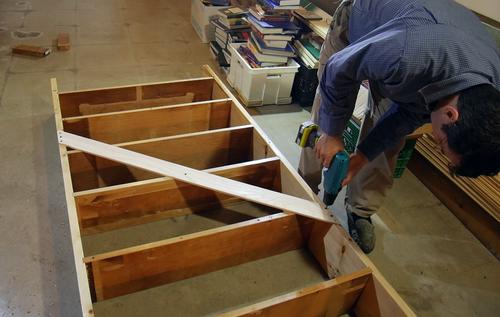
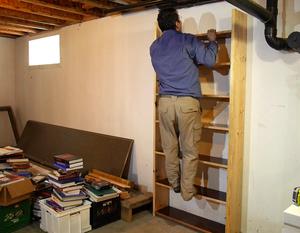 I also added a thin board at a diagonal on the back to give the shelf some
side-to-side stability. I then screwed the top of the shelf to the wall to
make sure it won't tip on some potential kid (or adult) climbing up it.
That actually made the diagonal brace redundant.
I also added a thin board at a diagonal on the back to give the shelf some
side-to-side stability. I then screwed the top of the shelf to the wall to
make sure it won't tip on some potential kid (or adult) climbing up it.
That actually made the diagonal brace redundant.
With the shelves made of hardwood (as opposed to particle board in store bought shelves), they can take my weight without any noticeable sag. So it should be able to hold books without sagging.
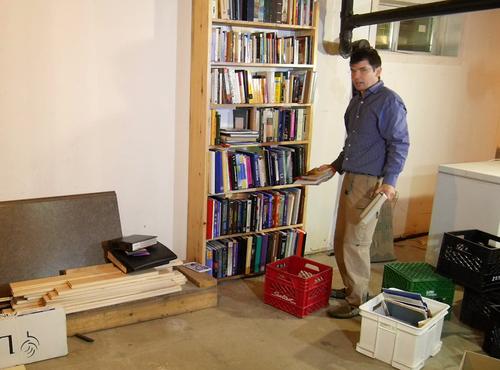 The shelf is big enough for almost all our books. The remaining
box is children's books. But the children's books actually get used
a lot these days, so they aren't going in the basement.
The shelf is big enough for almost all our books. The remaining
box is children's books. But the children's books actually get used
a lot these days, so they aren't going in the basement.